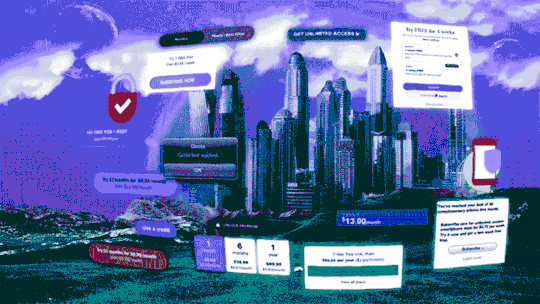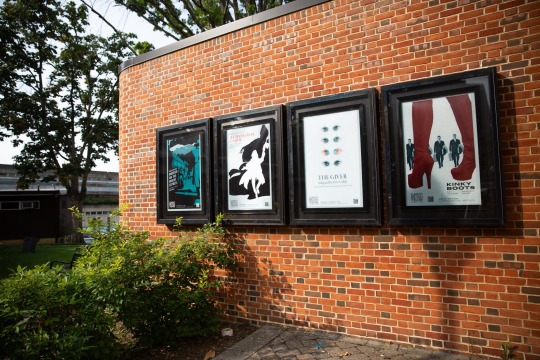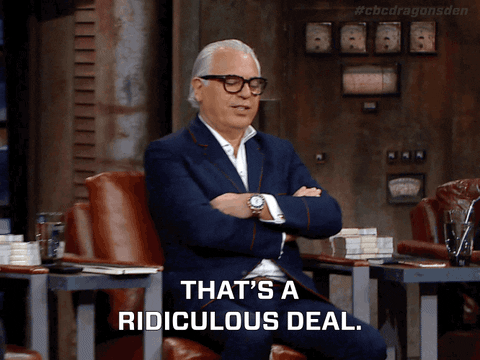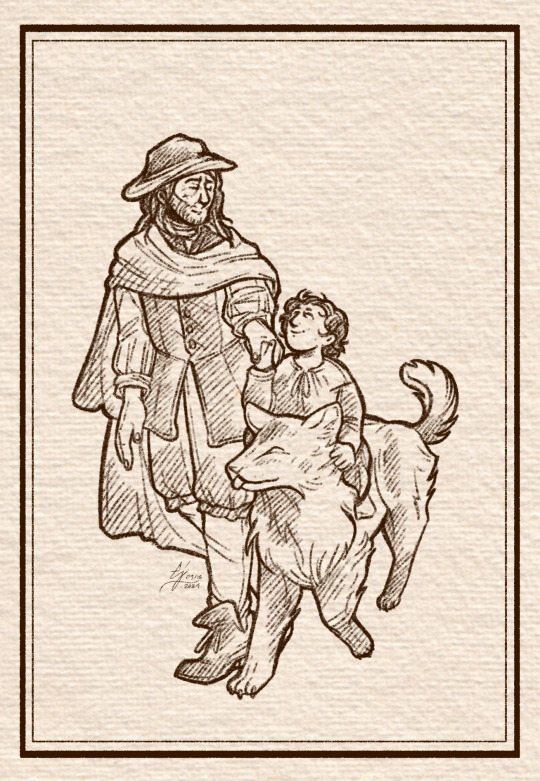#Subscription Model
Explore tagged Tumblr posts
Text

Life used to be free (2023)
#Life used to be free#paywall#subscription#subscription model#freemium#capitalism#webcore#gif#internetcore#frutiger aero#cyberpunk#indigo#teal#008080#my work#net art#netart#webpunk#NETSCAPISM
65 notes
·
View notes
Text
If you're mad about music, games, and other media all moving to subscription models, you should probably consider also being mad about housing being on a subscription model
24 notes
·
View notes
Text




(Long Post, Sorry) Hitting Theater Hard: The Loss of Subscribers Who Went to Everything
The subscription model, in which theatergoers buy a season’s worth of shows at a time, had long been waning, but it fell off a cliff during the pandemic.
As a group of stagehands assembled train cars for the set of “Murder on the Orient Express,” Ken Martin looked grimly at his email. His first year as artistic director at the Clarence Brown Theater in Knoxville, Tenn., was coming to an end, and the theater had missed its income goals by several hundred thousand dollars, largely because it had lost about half its subscribers since the start of the pandemic.
“I’ve already had to tear up one show, because of a combination of cost and I don’t think it’s going to sell,” he said. “I’m in the same boat as a lot of theater companies: How do I get the audience back, and once I get them in the door, how do I keep them for the next show?”
The nonprofit theater world’s industrywide crisis, which has led to closings, layoffs and a reduction in the number of shows being staged, is being exacerbated by a steep drop in the number of people who buy theater subscriptions, in which they pay upfront to see most or all of a season’s shows. The once-lucrative subscription model had been waning for years, but it has fallen off a cliff since the pandemic struck.
It is happening across the nation. Seattle’s 5th Avenue Theater had 13,566 subscribers last season, down from 19,770 before the pandemic. In Atlanta, the Alliance Theater ended last season with 3,208, down from a prepandemic 5,086, while Northlight Theater, in Skokie, Ill., is at about 3,200, down from 5,700.
Theaters are losing people like Joanne Guerriero, 61, who dropped her subscription to Paper Mill Playhouse in Millburn, N.J., after realizing she only liked some of the productions there, and would rather be more selective about when and where she saw shows.
“We haven’t missed it,” she said, “which is unfortunate, I suppose, for them.”
Many artistic leaders believe the change is permanent.
“The strategic conversation is no longer ‘What version of a membership brochure is going to bring in more members,’ but how do we replace that revenue, and replenish the relationship with audiences,” said Jeremy Blocker, the executive director of New York Theater Workshop, an Off Broadway nonprofit that has seen its average number of members (its term for subscribers) drop by 50 percent since before the pandemic.
Why do subscribers matter?
“No. 1, it reduces your cost of marketing hugely — you’re selling three or five tickets for the cost of one,” said Michael M. Kaiser, the chairman of the DeVos Institute of Arts Management at the University of Maryland. “No. 2, you get the cash up front, which helps fund the rehearsal period and the producing period. And No. 3, subscriptions give you artistic flexibility — if people are willing to buy all the shows, some subset of the total can be less familiar and more challenging, but if you don’t have subscribers, every production is sold on its own merits, and that makes taking artistic risk much more difficult.”
There’s also a strong connection between subscriptions and contributions. “Most donors are subscribers,” said Maggie Mancinelli-Cahill, the producing artistic director of Capital Repertory Theater in Albany, N.Y., “so there’s a cycle here.”
Theaters are simultaneously trying to retain — or reclaim — subscribers, and also reduce their dependence on them. Many are experimenting with ways to make subscriptions more flexible, or more attractive, but also seeing an upside in the need to find new patrons.
Programming is clearly on the mind of lapsed subscribers around the country. Even as subscriptions have fallen sharply at regional nonprofits whose mission is to develop new voices and present noncommercial work, they have remained steadier at venues that present touring Broadway shows with highly recognizable titles.
“There’s so much going on with the ‘ought-to-see-this-because-you’re-going-to-be-taught-a-lesson’ stuff, and I’m OK with that, but part of me thinks we’re going a little overboard, and I need to have some fun,” said Melissa Ortuno, 61, of Queens. She describes herself as a frequent theatergoer — she has already seen 17 shows this year — but finds herself now preferring to purchase tickets for individual shows, rather than subscriptions. “I want to take a shot, but I don’t want to be dictated to. And this way I can buy what I want.”
But there are other reasons subscribers have stepped away, including age. “We’re all old, that’s the problem,” said Happy Shipley, 77, of Erwinna, Pa., who decided to renew her subscription at the Bucks County Playhouse, but sees others making a different choice. “Many of them don’t stay up late anymore; they’re anxious about parking, walking, crime, public transportation, increased need of restrooms, you name it.”
Arts administrators say that many people who were previously frequent theatergoers remain fans of the art form, but now attend less frequently, a phenomenon confirmed in interviews with supersubscribers — culture vultures who had multiple subscriptions — who say they are scaling back.
Lisa-Karyn Davidoff, 63, of Manhattan, subscribed to 10 theaters before the pandemic; now she is far more choosy, citing a combination of health concerns and reassessed priorities. “If there’s a great cast or something I can’t miss,” she said, “I will go.” Rena Tobey, a 64-year-old New Yorker, had at least 12 theater subscriptions before the pandemic, and now has none, citing an ongoing concern about catching Covid in crowds, a new appreciation for television and streaming, and a sense that theaters are programming shows for people other than her. “For many years, I’ve pushed my boundaries, and I’m just at a point where I don’t want to do it anymore.”
And Jeanne Ryan Wolfson, a 67-year-old from Rockville, Md., who had four performing arts subscriptions prepandemic, is just finding she likes an à la carte approach to ticket purchasing; she kept two of her previous subscriptions, dropped two, and added a new one. “I was paying a lot of money for the subscriptions, and some of the productions within those packages were a bit disappointing or might not have the wow factor I was looking for,” she said. “I think what I want to do is pick and choose.”
Martin said the Knoxville theater’s staff has spent much of the summer discussing the drop in subscriber numbers — the theater had about 3,000 before the pandemic, but 1,500 last season — and hired a marketing firm to study the situation.
Then comes “Kinky Boots,” the kind of uplifting musical comedy many of today’s audiences seem to want. (“Kinky Boots,” with a plot that involves drag queens, also makes a statement for a theater in Tennessee, where lawmakers have attempted to restrict drag shows.) There will be more adventurous productions, but in a smaller theater: “The Moors” by Jen Silverman, and “Anon(ymous)” by Naomi Iizuka.
But selling tickets show by show, instead of as a package, is challenging and expensive.
“It takes three times as much money, time and effort to bring in someone new,” said Tom Cervone, the theater’s managing director. He said the theater is trying everything it can — print advertising, public radio sponsorships, social media posts, plus appearances at local street fairs and festivals where the theater’s staff will hand out brochures and swag (branded train whistles to promote “Murder on the Orient Express,” for example) while trying to persuade passers-by to come see a show.
The theater, which is on the flagship campus of the University of Tennessee, is less dependent than some on ticket revenue, because, like a number of other regional nonprofits, it is affiliated with a university that subsidizes its operations. Still, the money it earns from ticket sales is essential to balancing the budget.
“It’s been scary some days,” Cervone said, “like, where is everybody?”
Michael Paulson is the theater reporter. He previously covered religion, and was part of the Boston Globe team whose coverage of clergy sexual abuse in the Catholic Church won the Pulitzer Prize for Public Service. More about Michael Paulson
#refrigerator magnet#for educational purposes only#theater#theatre#subscription model#stage#drama#demise of the american theater
4 notes
·
View notes
Text
JetBrains has a decent compromise, at least, with their perpetual fallback licenses. You can get, and keep using, the same version of the software forever if you want. No updates though, which sounds fair.

6K notes
·
View notes
Text
Why the Subscription Model Is Failing And What’s Replacing It.
Let’s be honest:
Most of us are one more subscription away from losing it.
Netflix. Spotify. Canva. Your email software. Your fitness app. That thing you subscribed to three months ago and forgot how to cancel.

💳 It’s death by monthly payments — and people are over it.
We used to love subscriptions. Now, they feel like tiny financial traps with slick logos.
If you're a founder, creator, or small business owner still clinging to the subscription model — this is your friendly wake-up call. It's not 2015 anymore.
Here’s why the subscription model is quietly burning out… and what’s stepping in to replace it.
😵💫 People Are Subscribed to Death Subscriptions used to feel like freedom. Now they feel like another unpaid bill.
According to surveys, the average person manages between 8–12 active subscriptions. That’s a full-time job just to remember what you’re paying for.
We don’t want more things we forgot we signed up for.
We want flexibility, transparency, and most of all — control.
💔 The Love Affair Is Over — Here's Why
Subscription Overload It’s not just Netflix anymore. It’s groceries, dog toys, digital planners, and “AI tools you’ll totally use one day.”
Our brains (and bank accounts) are maxed out.
Surprise Charges = Instant Regret Nothing sparks rage like seeing “$29.99 - RECURRING” on your bank statement from something you haven’t touched in months.
People don’t want to be tricked. They want to opt in, not get trapped.
One-Size-Fits-All Doesn’t Fit Anyone Anymore Sometimes you want the product. Just… not forever. Or every month. Or automatically charged without warning.
We want à la carte, not “eat this forever or else.”
🚩 If You’re a Business, Watch These Red Flags: Customers ghosting your free trials before they convert
Sky-high churn after month two
Constant “how do I cancel?” support tickets
Trust issues from people scared to enter their credit card info
If this is happening, it’s not just you. It’s the model.
🔁 So What’s Replacing Subscriptions? Here’s what the smart businesses are pivoting to:
Pay-Per-Use (a.k.a. “Only When I Need It”) People are happy to pay — just not for things they might use.
Examples:
Buying individual AI credits instead of a monthly plan
Paying for a single video edit, design, or fitness class when needed
👉 It’s permission to not commit — and people love that now.
One-Time Payments with Upsells Let me buy it once. If I love it, I’ll come back for more.
Examples:
Notion templates
Digital downloads with optional add-ons
Lifetime licenses for software
This feels like a breath of fresh air to consumers who are tired of slow-dripping money every month.
Memberships > Subscriptions People don’t just want access — they want to belong.
Examples:
Exclusive communities (Slack, Circle, Discord)
Creators on Patreon with behind-the-scenes content
Private workshops, live calls, and shared wins
It’s not just content — it’s connection.
Freemium With Real Value Let people use your product first. Blow them away. Then make upgrading a no-brainer.
Examples:
Canva, Notion, and ChatGPT
Tools that give real value before asking for a dime
This builds trust. And trust → long-term customers.
💡 If You’re Building Something, Ask Yourself: Can someone try this without committing long-term?
Can I deliver value up front, with no strings?
Would I want to pay for this every month — or would I rather own it?
Your answers might surprise you.
🧠 TL;DR: Subscriptions Aren’t Dead, But They’re Not Beloved People aren’t anti-paying. They’re anti-feeling tricked. Anti-hidden fees. Anti-commitment.
We’re shifting from: ❌ “Pay me forever.” to ✅ ��Let me earn your trust — and your next transaction.”
💬 Subscriptions = predictable revenue. Flexibility = sustainable revenue.
Businesses that adapt to this shift? They’ll win big. With customers who are actually happy to pay.
✨ If you're building something right now: You don’t have to scrap subscriptions completely. But it’s time to get creative with how you deliver value.
Make it flexible. Make it clear. Make it worth paying for — on the customer’s terms.
0 notes
Text
World of Warcraft at 20: A Cultural Titan Still Thriving
By Cliff Potts (a.k.a. GreyHawk c. 2008) June 1, 2025In the ever-evolving landscape of digital entertainment, few games have achieved the enduring success of *World of Warcraft* (WoW), a massively multiplayer online role-playing game (MMORPG) developed by Blizzard Entertainment. Launched in 2004, WoW has not only shaped the gaming industry but also become a cultural phenomenon, weaving itself…
#Azeroth#Blizzard Entertainment#cultural impact#Dragonflight#expansion packs#gaming#MMORPG#multiplayer gaming#online community#player engagement#Subscription Model#The War Within#virtual world#World of Warcraft#WoW Classic
0 notes
Text
why choose Travel Advantage
TravelAdvantage offers community managers an exceptional opportunity to make substantial savings on their travel-related expenses. By leveraging the platform’s various membership tiers (VIP, Plus and Elite), users have the opportunity to benefit from never-before-seen discounts and travel points. These points serve as a currency on the platform, which can be earned through constant commitment and…
#bizeemtraffic#community managers#Elite#Loyalty Benefits#prezi#prodownlines#Significant Savings#Subscription Model#VIP#why choose Travel Advantage
0 notes
Text
Adobe's terms of disservice
Above: Adobe’s headquarters in Silicon Valley Photo by wolterke/DepositPhotos BitDepth#1463 for January 17, 2024 Adobe, the market leader in delivering software for designers, photographers and creators across a range of fields found itself in hot water with its customers when the wording of its new terms of service in the revised end user licensing agreement (EULA) struck a discordant…

View On WordPress
1 note
·
View note
Text
You're What You Own
You're What You Own
Go to any garage sale and you’ll find piles of DVDs for sale. Everyone’s getting rid of their collection. With streaming being so commonplace, no one’s turning to their hoards of disks for entertainment, so now getting a dollar or two for them is the way to go. Obviously, clicking play on Netflix is easier than finding the disk on the shelf, turning on the DVD player, zipping through the menu,…

View On WordPress
#DVDs#life#media#movies#renting#society#streaming#streaming platforms#subscription#subscription model
0 notes
Text
How do subscription models contribute to customer retention and loyalty?
Subscription models have become increasingly popular in recent years, and for good reason. They offer a unique way for businesses to build customer retention and loyalty.
In this post, I'll delve into the various ways subscription models contribute to customer retention and loyalty.
Do you know? - “Millennials are the most likely to pay for content: 58.0% have a subscription” – Attest 2023 Report
Subscription Models for Customer Retention and Loyalty:
1. First and foremost, subscription models provide customers with a sense of convenience. By subscribing to a service or product, customers can enjoy a hassle-free experience.
They don't have to worry about repurchasing or keeping track of their purchases. This convenience factor plays a significant role in keeping customers loyal.
After all, who doesn't love simplicity?
2. Moreover, subscription models often come with added benefits and perks that customers wouldn't get with one-time purchases.
These can include exclusive access to premium content, personalized recommendations, early product releases, or even discounts on additional purchases.
By offering these extras, businesses incentivize customers to stay subscribed and build loyalty over time.
“According to our data, the top subscription acquisition sources are: Sign-up form on home page (37%), Online registration for webinars or events (33%), and Sign-up form on other customer-facing page of website (33%)” - The 2023 State of Email Workflows Report
3. Another noteworthy aspect of subscription models is the element of surprise and delight.
Many subscription services curate boxes or packages that contain different products each month.
This surprise factor not only keeps customers engaged but also creates anticipation and excitement around the next delivery. It's like receiving a gift every month.
This emotional connection strengthens the bond between the customer and the brand, leading to increased loyalty.
4. Additionally, subscription models foster a sense of community and belonging.
Many subscription services have online forums or communities where subscribers can interact with each other, share experiences, and provide feedback.
This creates a sense of belonging and allows customers to feel part of something bigger than just a purchase.
By nurturing this community aspect, businesses cultivate loyal customers who advocate for their brand.
5. Furthermore, subscription models enable businesses to gather valuable customer data.
With each subscription renewal, businesses have an opportunity to collect feedback, preferences, and usage patterns.
This data can be used to better understand customers' needs and tailor future offerings accordingly.
By continuously improving their products or services based on customer feedback, businesses can increase customer satisfaction and further strengthen loyalty.
“Outline a subscription program for items that need frequent replenishment and add value by throwing in a little extra goodie— some of that slow-moving inventory you’d love to clear out” – American Express and PayPal Survey [Retail Dive Newsletter]
6. Lastly, subscription models often offer cost savings compared to one-time purchases.
Customers are more likely to stay subscribed if they feel they are getting a good deal or saving money in the long run.
The perceived value of a subscription can outweigh the cost, making it an attractive option for customers who want to maximize their budget.

Image Content Source - Social Media Trends 2024 Report by ICUC Social
In conclusion, subscription models contribute to customer retention and loyalty through convenience, added benefits, surprise and delight, community building, data collection, and cost savings.
By leveraging these aspects effectively, businesses can create long-term relationships with their customers and foster brand loyalty in an increasingly competitive market.
Here's related information that you may also find helpful – Customer Retention vs Customer Development [with FAQs]
0 notes
Text
I know this has been said before but man I wish people stopped acting like it's a profound shock when they are not personally notified about Critical Role's schedule. There is a website. There is a newsletter. There is a Twitter. Matthew Mercer is not going to show up on your doorstep and gently type in the URL, his hands over yours like Patrick Swayze in Ghost. The power rests within you.
#if there's one thing i detest it's learned helplessness#was anyone going to tell me - NO they weren't what are you going to do about it#anyway people in the youtube comments having a normal one about the lack of notification with the new yt subscription model
276 notes
·
View notes
Text

grimm boi
#my art#grimmjow jaegerjaquez#bleach#fanart#gif#amberdraw#another attempt#this app could be cool if it had layers#(let me sketch first and refine my lines 😭)#(I havent seen any function of it)#and no subscription model for the brushes 🙄
45 notes
·
View notes
Text

ursus + homo + baby déa :)
#em draws stuff#l'homme qui rit#the man who laughs#déa#ursus#apparently another Em Theme in media is girl+dad+wolf sort-of trio#still a bit iffy on my ursus design (he looked better in the sketch but sometimes it goes that way) but I'm VERY pleased with déa#where is gwynplaine you may ask. well maybe they are walking to meet him somewhere :)#unrelatedly. my kingdom for that clip studio auto action for putting a thicker line around your selection :|#<- still complaining about how clip studio is a subscription model on the device I'd want to put clip studio on
57 notes
·
View notes
Text
the thing about Drool of the Killer is that like. yeah it's the anthology of the killer game that's "wouldn't it suck if you couldn't get out of the pool" instead of like "morality is ideological (and moral art is an ideological weapon) (also art is a commodity)" or "the erosion of privacy and the marketing industry go hand-in-hand with the carceral state" but like. it's also what if everything was the pool. what if the pool was expanding every day and every day more and more businesses were Also becoming a pool. the bus to the pool is now passing by your house hourly, reminding you that its right there if you ever want to go back. what if the water park based economy started eating the other forms of commerce. ECONOMY 2 is here and it's here to stay, baby
#or to put it another way:#We Are Never Getting Out Of The Pool#like in this case what im alluding to is the infinite subscription / closed garden model but thats just one symptom of This Kind of Thing#of ECONOMY 2 if you will#many such cases. as it were#also its about what if a wet ghost was there and she was spooky but like#woman who read adorno in college voice HEy guys did you know i read adorno in college#anthology of the killer#Also also to be clear flesh of the killer is about what if tony the tiger tried to Of The Kill You
32 notes
·
View notes